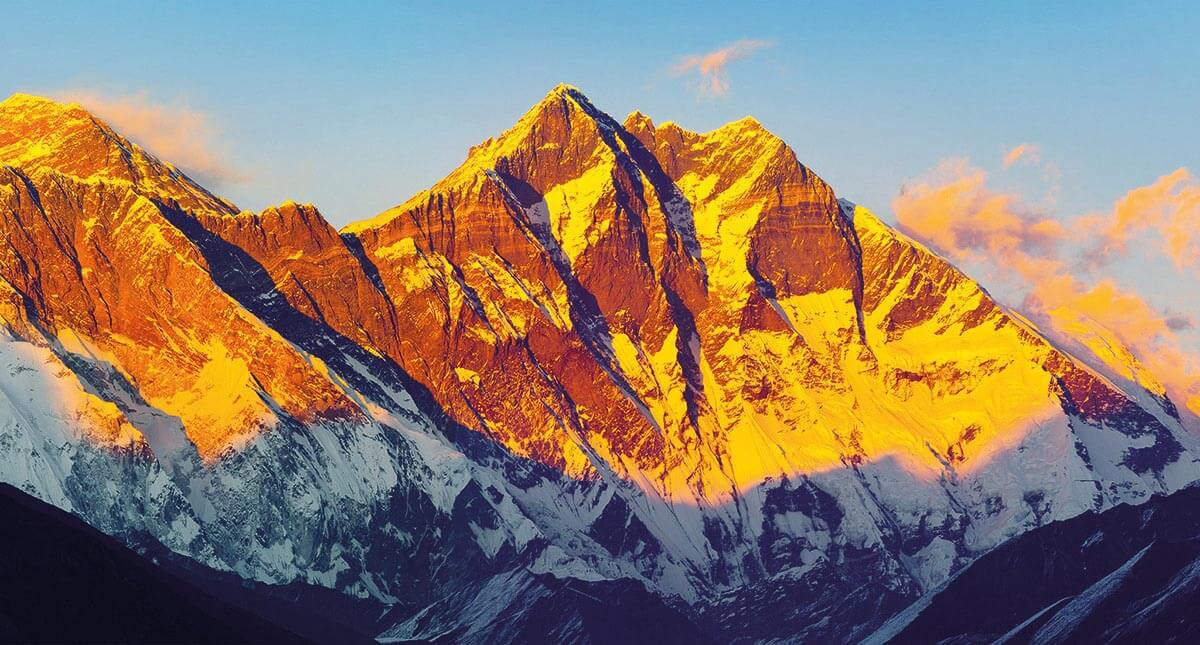
Researchers have predicted the birth of a new mountain range – the Somalaya – but we won’t be around to see it
By
Mountains rise and mountains fall, but not over timescales we humans will be around to witness. But that doesn’t mean that we can’t take a peek into the future. A team of researchers led by Douwe van Hinsbergen at Utrecht University has predicted the formation of a new mountain range – the Somalaya – 200 million years from now.
According to the team’s predictions, after breaking away from Africa, Somalia and Madagascar will collide with India. As one tectonic plate slides beneath the other, a process called subduction (which, in an event beginning 55 million years ago, led to the formation of the Himalaya), the Somalaya mountains will rise. ‘The Somalayas will form when Somalia breaks out of Africa, moving over India’s edge, leaving India as the dangling plate,’ explains van Hinsbergen.
The researchers inserted new subduction zones (the regions where one tectonic plate is forced beneath another) into a computer model to simulate this process. ‘To do that, we had to formulate a series of rules to determine which pieces of the current Indian Ocean would be scraped off and which ones wouldn’t, and how India, Somalia and Madagascar would be deformed,’ says van Hinsbergen.
Stay connected with the Geographical newsletter!
In these turbulent times, we’re committed to telling expansive stories from across the globe, highlighting the everyday lives of normal but extraordinary people. Stay informed and engaged with Geographical.
Get Geographical’s latest news delivered straight to your inbox every Friday!
By the time the Somalaya rise, the Earth will be unrecognisable, featuring many new mountain ranges. According to the Paleomap Project, which aims to illustrate plate tectonic development, Europe is expected to collide with Africa in 50 million years, creating a long mountain range along the Persian Gulf. Meanwhile, Australia will merge with Indonesia, Baja California will slide northward and new subduction zones may appear to the east of the Americas. In 100 million years, the continents will begin to coalesce; in 250 million, North America will collide with Africa and South America will wrap around Africa’s southern tip, creating a new ‘supercontinent’, dubbed Pangaea Ultima.
For now, such predictions are thought experiments, but according to van Hinsbergen, they have real-world value. ‘If we really want to understand how the Earth works, we need to understand the basic rules of how geology and geography work,’ he says. There are also contemporary challenges that stand to benefit from such work. ‘Decarbonising is going to need a lot of minerals: we need to be able to predict where to find them, and not just accidentally.’ Currently, one per cent of exploration projects for new mineral deposits are successful; van Hinsbergen believes that we can make more accurate predictions by better understanding the process of mountain formation. In doing so, we can peek into the world that may exist long, long after we are gone.


The research team have produced an animation to visualise the processes by which the Somalaya mountain range will form:




